By : Nikon School Blog | 14 Nov, 2014 |
Photography means writing with 'light', but once you're into photography, you often realise that light is not as abundant a resource for the photographer as it is for others. At dawn or dusk, the whole world enjoys the subtle play of colours in the soft, faint light. The ones with sulking faces are usually budding photographers.
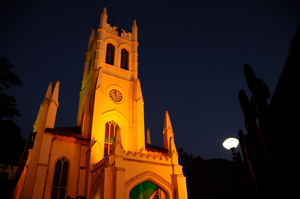 Shimla Church : f/4 , 1/40 , ISO 400
Shimla Church : f/4 , 1/40 , ISO 400
First aim for all photographers, in any light, is to get a good exposure. In good light, we can stick to shutter speeds in the range of 1/60 to 1/250 even with ISO 100 or 200. But when in low light, maintaining speeds of 1/30 or 1/15 may seem a luxury. Of course one option is to increase the ISO, but that should come to your mind as a last resort, as every increase in ISO comes at the cost of image quality.
From early on, practice shooting with slow shutter speeds. With time, you should be able to shoot still subjects at speeds of 1/15 or 1/8 sec with handheld camera. One trick for improving success rate at slow speeds is to shoot at continuous burst. This allows multiple shots to be taken at quick succession, out of which some may get blurred due to camera shake, but a few in between these blurred shots usually turn up sharp.
Many low light shooters like to hold their breath during the exposure, thus avoiding camera shake. This is very effective, but comes with practice.
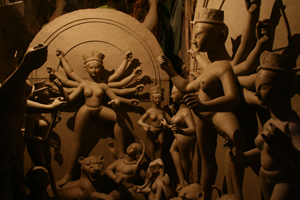 Kolkata : f/4.5 , 1/8 , ISO 400
Kolkata : f/4.5 , 1/8 , ISO 400
To get additional stability at slow shutter speeds, you can take the help of a nearby wall or a pillar, any solid structure which supports your weight while you shoot.
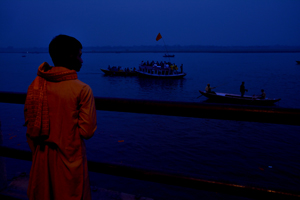 Varanasi: f/5.6 , 1/30 , ISO 400
Varanasi: f/5.6 , 1/30 , ISO 400
If your lens has the Vibration reduction (VR) option, turn it on in low light at slow shutter speeds. This allows you stability of at least two steps, four in ideal conditions. This means if you're shooting at 1/8 with VR on, then you should get the stability offered by 1/30 or 1/60. So, you don't have to increase ISO and compromise quality.
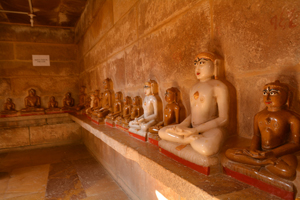 Jaisalmer: f/11 , 1/4 , ISO 200
Jaisalmer: f/11 , 1/4 , ISO 200
Having a tripod can be a blessing for low light shooters, as you can go for lower ISOs, maintaining high image quality. You can also get good depth of field by using smaller apertures in the range of f/8 or f/11. Shutter speeds at such apertures at ISO 200 may be around 3-4 seconds. Obviously tripod mounted long exposures are good for landscapes, or interiors, any situation without much subject movement.
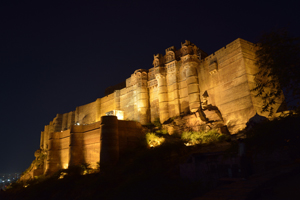 Jodhpur : f/11 , 30 sec , ISO 100
Jodhpur : f/11 , 30 sec , ISO 100
Even in low light conditions, shutter speeds of at least 1/60 or 1/125 are needed to freeze regular subjects on the move, like people walking, kids playing, animals on the move etc.
Obviously, low light added to fast shutter speed makes it difficult to expose the shot, even at wide open apertures. The only option left is to increase the ISO.
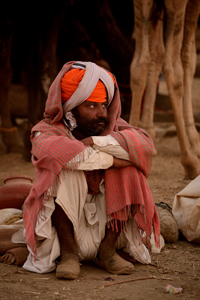 Jodhpur : f/11 , 30 sec , ISO 100
Jodhpur : f/11 , 30 sec , ISO 100
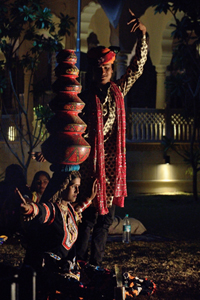 f/5.6, 1/60 , ISO 3200
f/5.6, 1/60 , ISO 3200
If you're worrying about quality, don't. Current Nikon D-SLR sensors offer amazing low light performance even at ISOs like 800 – 1600, unthinkable a few years back. You can use the auto ISO sensitivity feature in shooting menu and select arrange of around 200 – 1600 for the camera to choose from.
Learning to shoot in low light not only enhances your photography skills, but greatly widens the scope of your photography. So, go forth, and conquer the low lit world with your D-SLR!
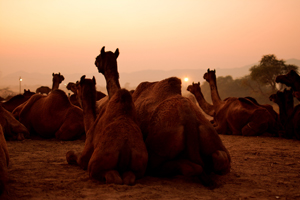 Pushkar : f/2, 1/60 , ISO 640 (auto)
Pushkar : f/2, 1/60 , ISO 640 (auto)